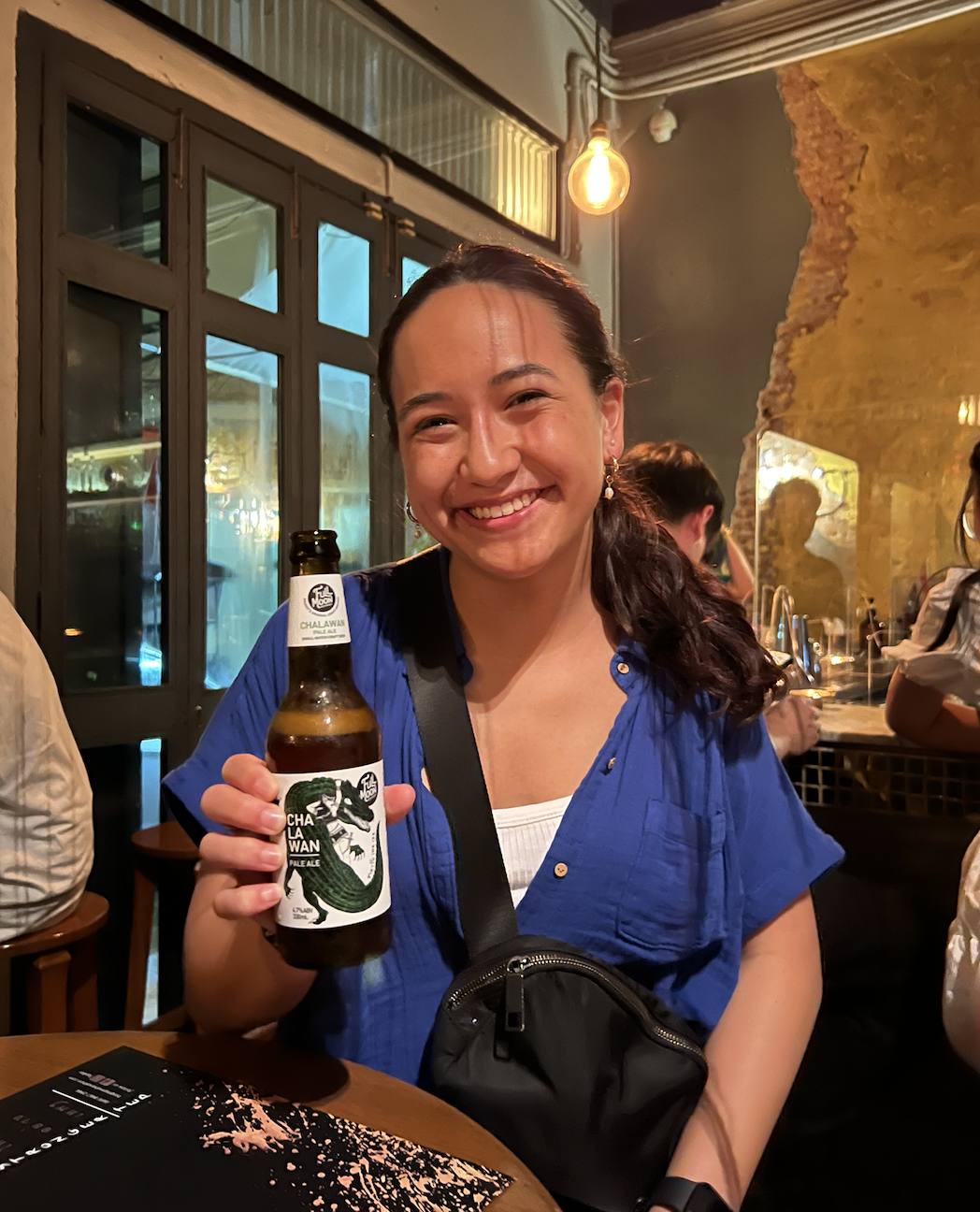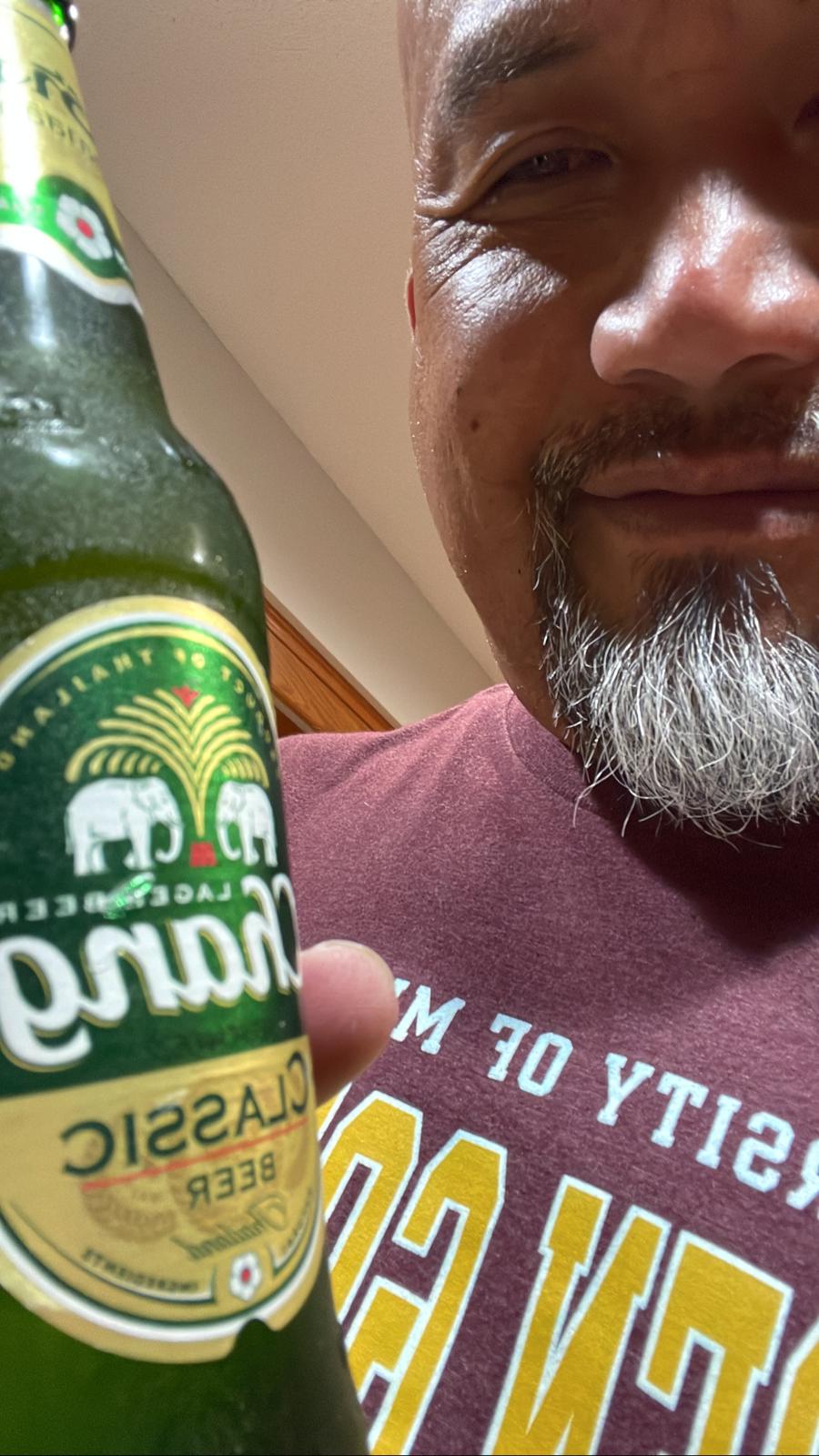Lesko, N. (2012) Act Your Age! A Cultural Construction of Adolescence (2nd Ed). Routledge Falmer, New York
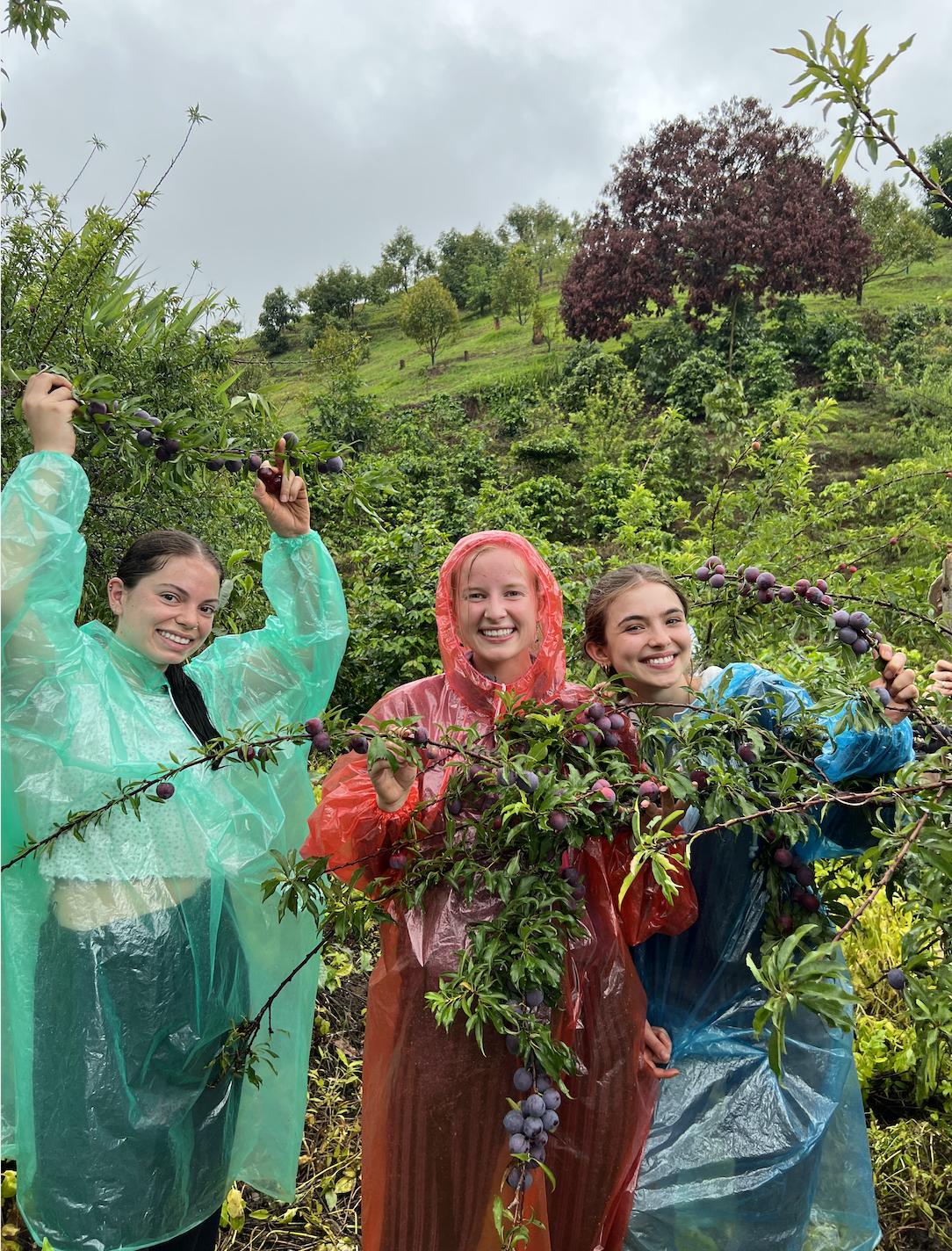
Lesko, N. (2012) Act Your Age! A Cultural Construction of Adolescence (2nd Ed). Routledge Falmer, New York

What is a night market? It is also called a Night Bazaar, but in simple terms, it is a market that operates at night. In a more defined definition, a night market is, according to Nor Khomar Ishak, Khursiah Abdul Aziz, and Amri Ahmad, “a grouping of temporary outdoor stalls operated by petty traders where products are displayed for sale.” What does this definition mean? It is said that a night market is a marketplace where traders or merchants looking to make profit come together, specifically at night, and sell their products. These products are often made by the traders themselves or often sourced from another trader who made the products. Products vary from cultural souvenirs to staple goods to foods. Night markets traced back to the Tang dynasty of China. Similarly, back then, night markets happened on the street. Traders would set up their stalls alongside the street within cities or at temples, according to the demand of the locals. Nowadays, there is often a determined location that traders would go to set up stalls. The success of night markets grew tremendously and is now considered as a tourist attraction in many Eastern countries.
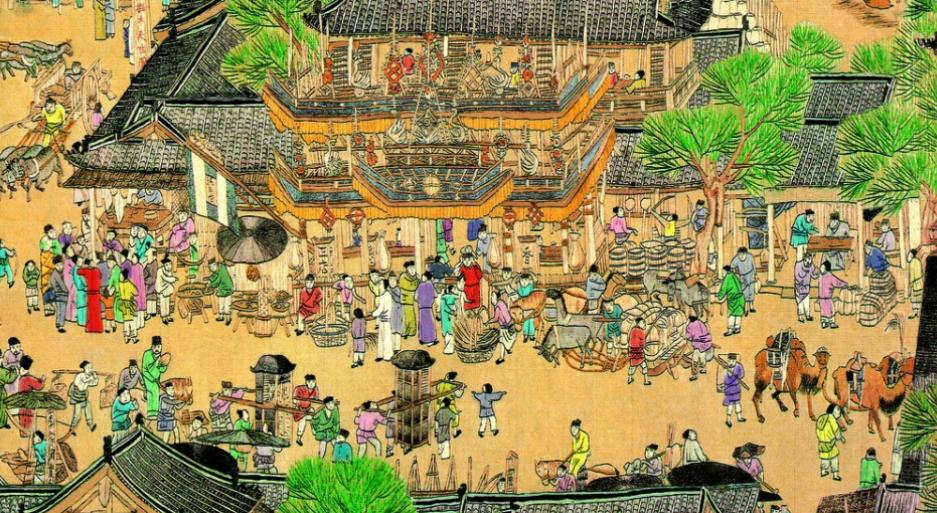
While there are other night markets in the world, for this particular blog, I will focus mainly on night markets within Thailand. There are numerous night markets spread throughout Thailand. Some of the more popular markets include Chiang Rai Night Bazaar, Suan Lum Night Bazaar, Talad Neon, and Chatuchak Weekend Market. Chatuchak Weekend Market is located in Bangkok and opens during the weekends only. However, within the two days that it is open, it can attract from 200,000 to 300,000 tourists every week. Given this, it is assumable that other markets experience similar numbers but may differ depending on size and location. That would mean that every week, the night markets throughout Thailand have the potential to easily attract millions of tourists alone, excluding locals. According to the article Quietly into the night by Pitsinee Jitpleecheep and Narumon Kasemsuk, night markets in Thailand generate 40 trillion baht or 1.168 trillion USD each year.
That said, all information from above in regards to night markets in Thailand are obtained pre-COVID-19. The Coronavirus or COVID-19 struck the entire globe late 2019 going into 2020. Since then many industries have taken a major toll. Night markets was one that was hit heavily from COVID-19. Night markets rely on the foot traffic of tourists and even locals to make a profit. With the COVID-19 pandemic going on, countries set travel restrictions which decreases traffic to other countries. Before the pandemic, Thailand experienced a constant number of over 30 million tourists into the country, with 39.92 million in 2019. Shortly after COVID-19 hit, the number went from over 30 million to a mere six million to zero to ten thousand late 2020. The six million were also just those who arrived before the pandemic. The pandemic has since then changed how night markets are. Night markets are not as vibrant as they used to be. They are not like how I remember them to be. Every corner and every spot at the market was utilized. Tourists were everywhere buying local products. It was just a joyful experience. Speaking with the locals too, tremendous amounts of stalls closed down and traders resorted to other alternatives to make a living. Truly is a sad sight to behold. Thankfully in 2022, the COVID-19 vaccination is available and has lessen travel restrictions. This has allowed for an increase in tourists lately and the reopening of night market stalls.
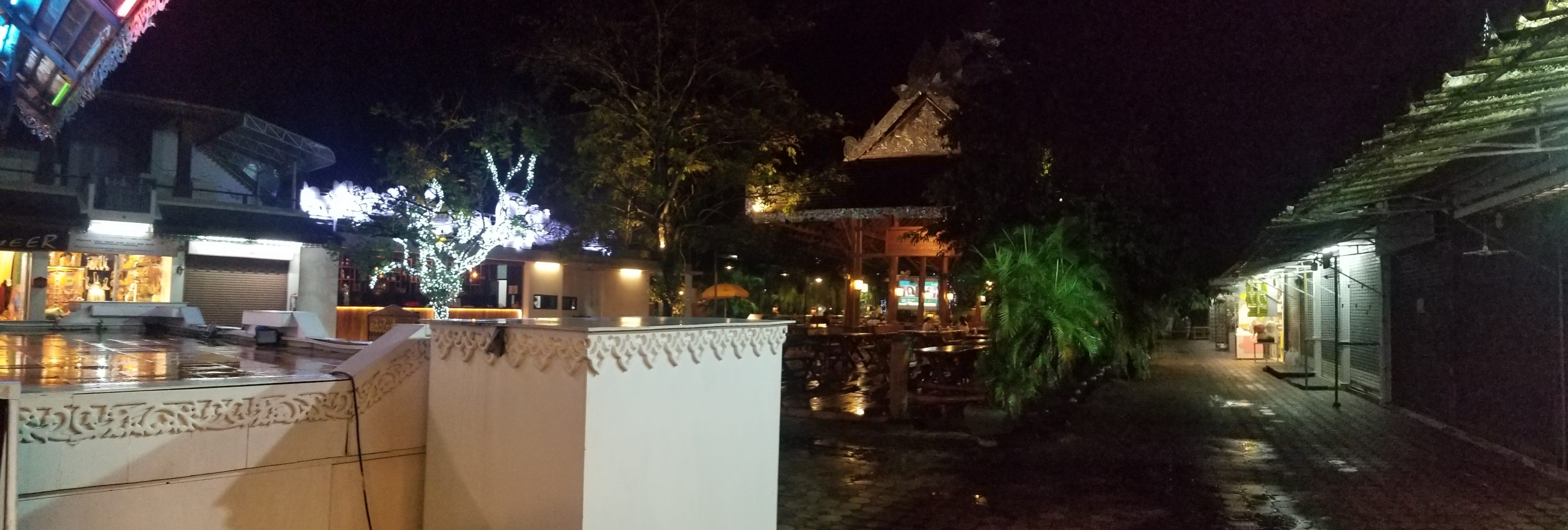
So, are night markets successful? In hindsight, yes, night markets are successful. It is just that given the current world situation, there are many challenges and factors to consider. The pandemic obviously has a major impact on night markets but political and cultural factors do have a role in it too. For instance, while there are night markets in the United States, it is not equally known or popular compared to Thailand’s night markets. Factors that contribute to this is the idea that people don’t feel safe at night in the United States. Another factor includes the amount of tourists that come to the United States to visit night markets. Majority of tourists come to the United States for our landmarks, museums, history, parks, and so on. Rarely are night markets the main objective. To fully understand how night markets can be successful, it is crucial to understand cultural and political factors within the country where one intends to set a night market.
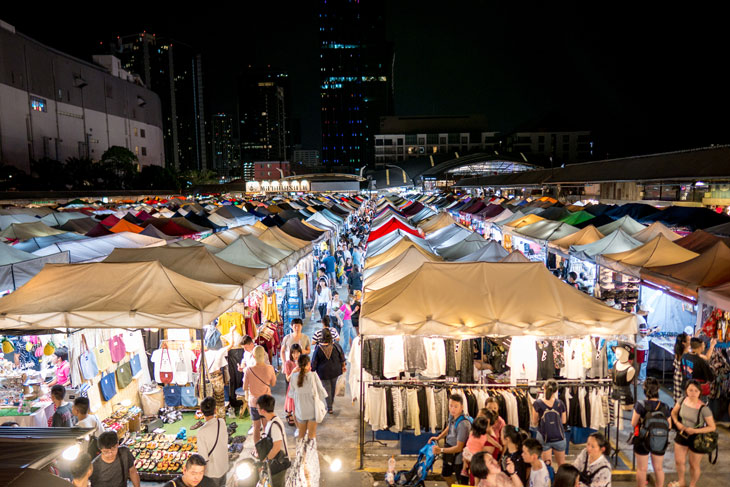
Works Cited
LODGING Staff, et al. “Survey Reveals What Attracts Visitors to U.S. Destinations.” LODGING Magazine, 1 Mar. 2019, https://lodgingmagazine.com/survey-reveals-what-attracts-visitors-to-u-s-destinations/.
“20 Night Markets in Thailand.” Https://Www.thrillophilia.com/, 21 Apr. 2022, https://www.thrillophilia.com/night-markets-in-thailand.
“7 Night Markets in Bangkok You Must Visit in 2022.” TopTravelFoods, https://toptravelfoods.com/article/night-markets-in-bangkok.
“Asian Institute.” Night Markets: The Cultural Melting Pot – Asian Institute, https://munkschool.utoronto.ca/ai/student-blog/night-markets-the-cultural-melting-pot/.
Dynamism of a Night Market – AABRI. https://www.aabri.com/manuscripts/11774.pdf.
Limited, Bangkok Post Public Company. “Quietly into the Night.” Https://Www.bangkokpost.com, 25 Oct. 2021, https://www.bangkokpost.com/business/2203559/quietly-into-the-night.
Tourism Statistics Thailand 2000-2022 – Thaiwebsites.com. https://www.thaiwebsites.com/tourism.asp.
Some of the main ingredients used that we found include zingiber cassumunar, which is a variety of ginger. It is used to ease pain and inflammation. It can be used in food as well. It has gram-positive and gram-negative bacteria dermatophytes and yeasts. It also has antimicrobial activity. It also has anti-fungal properties. It also has essential oil antioxidants of Sabine energy, terpineol, and curcumineia. Further, cymbopogon culverts is a variety of lemon grass. It works to relieve pain, reduce swelling, reduce fever, improve sugar levels and cholesterol in blood, stimulate uterus and menstrual flow, and it also has antioxidant properties. Additionally, moringa oleifera comes from drumstick trees and horseradish trees. It lowers high blood pressure, reduces cholesterol, has antioxidant properties, and works as an anti-inflammatory. It also protects against arsenic toxicity and is highly nutritious.
More of the popular ingredients include coccinia indica leaf, which has antioxidant properties, reduces plasma thiobarbituric acid, and has vitamin E. It also increases vitamin C and helps with diabetes. It is traditionally found in Ayurvedic medicine. Next, menthol helps with coughs, sore throats, and oral discomfort. It also helps with aches and pains. Additionally, camphor is used as a chest rub, acute pain killer, and helps with cold sores. It also helps with insect bites, minor burns and hemorrhoids, and coughing. It helps as a central nervous system stimulant. It comes from bark and wood of trees. Be careful not to take it orally or on broken skins. This is because it can enter the body and blood stream quickly and can cause poisoning. It is active against fungi as well.
In addition to the ingredients list above, aloe vera is used in treating skin injur and burn. It has antioxidant and amino acid properties. It inhibits bacteria growth, prevents infection, is anti-viral, and an anti-septic. It is beneficial for oral health as well. It reduces constipation, lowers blood sugar levels, and improves skin and reduces wrinkles. Additionally, Barcelona Lublina reduces inflammation from insect bites, snake bites, boils, and rheumatism. It helps with stopping bleeding as well. It also helps with pain relief. It is native to Southeast Asia. Finally, tiliacora Trivandrum is native to Southeast Asia. It works to relieve pain, fever, and is an anti-inflammatory. It has antioxidant properties. It also helps to fight against cancer, is anti-bacterial, and has anti-fungal properties. It improves memory impairment, has cooling effects, and has anti-aging properties. It also works to reduce blood pressure, is detoxifying, and helps to balance body temperature.
Some of the main ingredients used that we found include zingiber cassumunar, which is a variety of ginger. It is used to ease pain and inflammation. It can be used in food as well. It has gram-positive and gram-negative bacteria dermatophytes and yeasts. It also has antimicrobial activity. It also has anti-fungal properties. It also has essential oil antioxidants of Sabine energy, terpineol, and curcumineia. Further, cymbopogon culverts is a variety of lemon grass. It works to relieve pain, reduce swelling, reduce fever, improve sugar levels and cholesterol in blood, stimulate uterus and menstrual flow, and it also has antioxidant properties. Additionally, moringa oleifera comes from drumstick trees and horseradish trees. It lowers high blood pressure, reduces cholesterol, has antioxidant properties, and works as an anti-inflammatory. It also protects against arsenic toxicity and is highly nutritious.
More of the popular ingredients include coccinia indica leaf, which has antioxidant properties, reduces plasma thiobarbituric acid, and has vitamin E. It also increases vitamin C and helps with diabetes. It is traditionally found in Ayurvedic medicine. Next, menthol helps with coughs, sore throats, and oral discomfort. It also helps with aches and pains. Additionally, camphor is used as a chest rub, acute pain killer, and helps with cold sores. It also helps with insect bites, minor burns and hemorrhoids, and coughing. It helps as a central nervous system stimulant. It comes from bark and wood of trees. Be careful not to take it orally or on broken skins. This is because it can enter the body and blood stream quickly and can cause poisoning. It is active against fungi as well.
In addition to the ingredients list above, aloe vera is used in treating skin injur and burn. It has antioxidant and amino acid properties. It inhibits bacteria growth, prevents infection, is anti-viral, and an anti-septic. It is beneficial for oral health as well. It reduces constipation, lowers blood sugar levels, and improves skin and reduces wrinkles. Additionally, Barcelona Lublina reduces inflammation from insect bites, snake bites, boils, and rheumatism. It helps with stopping bleeding as well. It also helps with pain relief. It is native to Southeast Asia. Finally, tiliacora Trivandrum is native to Southeast Asia. It works to relieve pain, fever, and is an anti-inflammatory. It has antioxidant properties. It also helps to fight against cancer, is anti-bacterial, and has anti-fungal properties. It improves memory impairment, has cooling effects, and has anti-aging properties. It also works to reduce blood pressure, is detoxifying, and helps to balance body temperature.
When comparing the use of plants in the US compared to Thailand, Thailand uses plants that are native to this region or that grow wildly for many more purposes than the uses of these same plants in the United States. For example the plants that are sold at garden centers that have medicinal components or purposes are sold purely for decorative uses and are often disposed of each season, or do not survive the winter. Whereas in Thailand, plants are sold, marketed, and for both decorative and medicinal purposes and can survive indefinitely in this climate with proper care. Another difference between the U.S. and Thailand in terms of use and popularity of medicinal plants is that in Thailand, at most convenience stores, medicinal plant tinctures and mixtures are sold. The use of plants for medicinal purposes is much more widespread in Thailand among the general population. In the United States, medicinal plants are used primarily by varying ethnic groups including Native Americans and other groups not indigenous to the United States. Also in the United States, the use of plants in medicine is oftentimes considered alternative or complementary forms of medicine compared to Thailand, that incorporates these medicinal plants more commonly used between ethnic minority groups in Thailand and the Thai people. Many of the Thai and ethnic Thai people that we have come in contact with have knowledge of which plants can be used medicinally, what the use of those plants are, and where to access those plants. This information is often spread through family members, word of mouth, and personal experiences using these medicinal plants and personally knowing their effectiveness. This knowledge is less well known among the general American population.
References:
Bell, A. (2020, May 22). Camphor oil: Types, uses, and products.
Medical News Today.
Chongmelaxme, B., Sruamsiri, R., Dilokthornsakul, P., Dhippayom, T.,
Kongkaew, C., Saokaew, S., Chuthaputti, A., & Chaiyakunapruk, N.
(2017). Clinical effects of Zingiber cassumunar (Plai): A systematic
review. Complementary Therapies in Medicine, 35, 70–77.
Farco, J. A., & Grundmann, O. (2013). Menthol–pharmacology of an
important naturally medicinal “cool”. Mini reviews in medicinal
chemistry, 13(1), 124–131.
Kumari, R., Kumar, S., Kumar, A., Goel, K. K., & Dubey, R. C. (2017).
Antibacterial, antioxidant and Immuno-modulatory properties in
extracts of Barleria lupulina Lindl. BMC Complementary and Alternative
Medicine, 17(1). https://doi.org/10.1186/s12906-017-1989-4
Mbikay, M. (2012). Therapeutic Potential of Moringa oleifera Leaves in
Chronic Hyperglycemia and Dyslipidemia: A Review. Frontiers in
Pharmacology, 3. https://doi.org/10.3389/fphar.2012.00024
Sakharkar, P., & Chauhan, B. (2017). Antibacterial, antioxidant and
cell proliferative properties of Coccinia grandis fruits. Avicenna
journal of phytomedicine, 7(4), 295–307.
Sánchez, M., González-Burgos, E., Iglesias, I., & Gómez-Serranillos,
M. P. (2020). Pharmacological Update Properties of Aloe Vera and its
Major Active Constituents. Molecules, 25(6), 1324.
Shah, G., Shri, R., Panchal, V., Sharma, N., Singh, B., & Mann, A.
(2011). Scientific basis for the therapeutic use of Cymbopogon
citratus, stapf (Lemon grass). Journal of Advanced Pharmaceutical
Technology & Research, 2(1), 3.
Thongtham, N. (2013, November 10). Pharmacy on the forest floor.
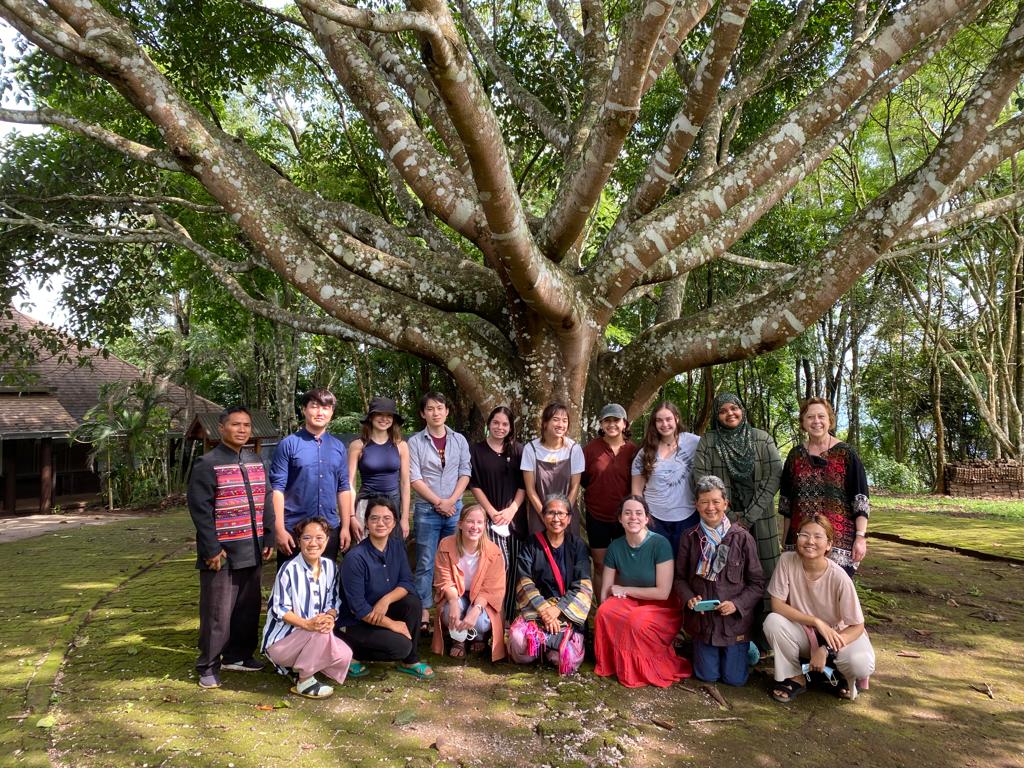
During our time spent in Thailand we have had the opportunity to visit multiple non-profit organizations. The first one being HADF: Hill Area and Community Development Foundation. During our time at the retreat center, we were honored to have the opportunity to have received a visit from the founder of HADF and learn more about the mission and beginnings of the organization. Kuhn Duenjai Deetate (Kru Dang) shared her journey as a volunteer with the hill tribe communities which then later manifested into the start of HADF. Kru Dang talked about how it wasn’t just about the theory of the communities of Thailand but it was the practice of learning from the people – including the children. One of her goals was to emphasize the importance of shifting from assimilation to a multicultural learning system that has developed into spaces where multiple communities are able to learn and live among one another. She discussed the common factor of the importance of simplicity and peacefulness with mother earth among many Hill tribe communities. Which is something that we got the opportunity to witness and learn from, and is something I value and will take with me and as I move throughout my life. Our time at HADF was not only an incredible learning experience but we were also surrounded by a truly amazing community of people.

The Center for Girls was another non-governmental organization that so graciously invited us into their space in the city of Chiang Khong to learn more about what they do as an organization. The founder of the Center for Girls, Nunnaree Luangmoi, shared her story of starting as a youth volunteer in 1997 and then later opening an organization that focuses on topics such as gender equality and child protection. This includes issues such as child prostitution, sex trafficking, child marriage and domestic violence. When asked about how the organization worked to tackle these issues, she discussed how they go into villages and communities to work with them and start committees of community members that will play an active role in advocating for personal and communal issues. How a case is handled once the organization is aware is done on a case by case basis, considering the severity and needs of those involved. The founder has been operating the Center for Girls for twenty five years and continues to make a lasting impact.
One thing that I really appreciated about both the Santivittaya Elementary school and the Anuban Wiengken School was the fluidity of the curriculum. I found it to be so meaningful that students voices and interests were incorporated in aspects of their studies. Something that stood out to me at the Anuban Wiengken school were the science projects in which they also practiced independence (something that the school mentioned was important to them). The students chose projects that related to their lives and villages. Hand sanitizer and soaps to fight Covid-19 and tiger balm for itchy mosquito bites and feeling faint. For all of these products, they used pomelo that were purchased from local farmers, keeping that support within their own communities. The other school also had their grade 6 class make mosquito repellant gel in class because they were noticing a lot of mosquitoes at home. Allowing students to express their own interests and needs and incorporating that in the classroom can help to improve student engagement, creating a positive learning environment, as well as gaining knowledge that is meaningful to them and can be used and passed down for future generations to use as well.
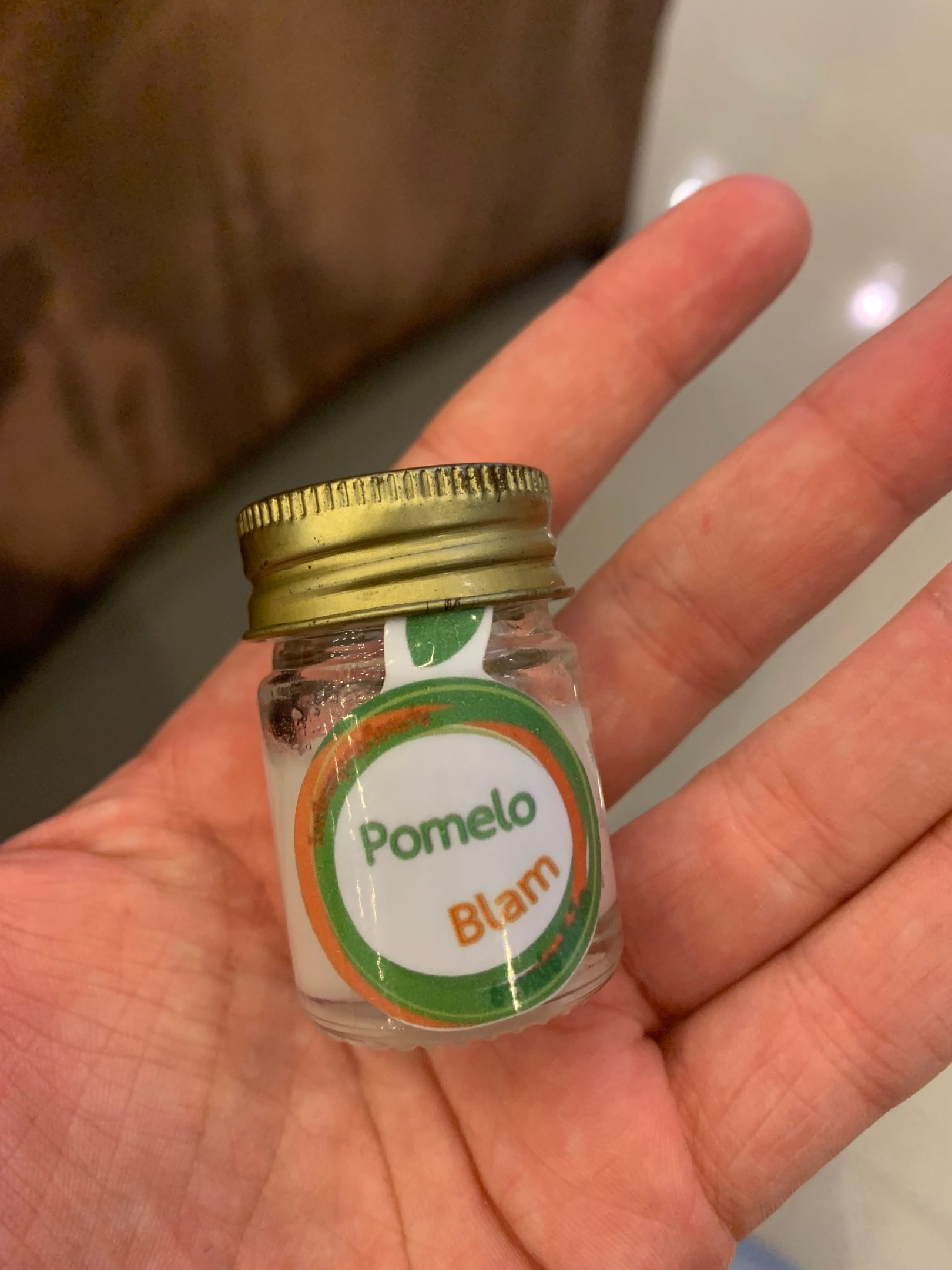
Cultural identity and emotional expression were also very prevalent at both schools. At the Santivittaya Elementary school, every Friday they dress up in their traditional garments from their ethnic group. Both schools were proud of the diversity of cultural identities that their students had. In school they focus specifically on speaking Thai, English, and Chinese in the program after the regular school day. Although, if they wanted to speak their own dialect in class and with their friends that was also welcomed. Along with that, the Santivittaya Elementary school mentioned that they connected ethnic groups of students by incorporating activities that relate to their identities. Similarly, I noticed that emotional expression was also encouraged. I feel like often times in the United States teachers are quick to shut students down when they get excited, but at the schools we visited they allowed them to feel their emotions fully. I thought this could also be seen after reflecting with the rest of the group after leaving the school. Someone mentioned how the students felt comfortable confiding in their teacher about how they were feeling in that moment. I thought this was really cool to hear because it shows that the student and teacher relationship felt safe and comfortable.
The last thing that I wanted to mention about the schools we visited was the open layout of them. Comparing it to the United States where many schools were literally designed by the same people who were designing prisons it was a very different learning environment. For example, in the United States there are very few windows, dull brick walls or concrete painted white, and bright fluorescent lights. In the classrooms that we saw there was natural light streaming in from the many windows which were all opened for fresh air. The school was also filled with bright colors and many decorations hung up around the classrooms. Similarly to the United States, the teacher stands up at the front of the classroom and instructs the students who are sitting in desks in rows. To be fair, some students do prefer to learn in that way. Although, if I could change one thing in both places I think it would be to sit in a circle formation in a way that the students and the teacher are all of the same level to reduce the hierarchy within the learning space.
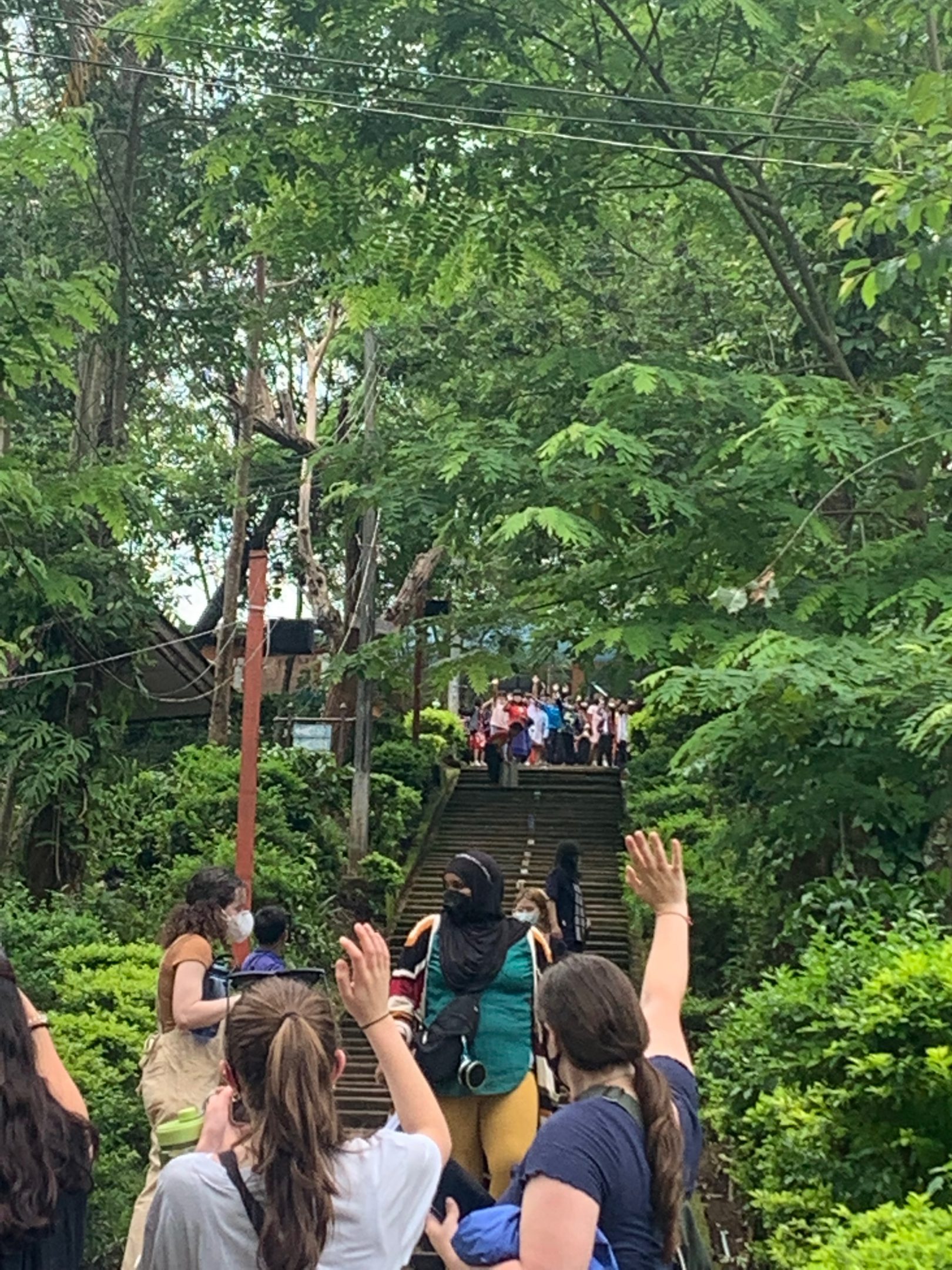
My time at the retreat center began with a Thai-style hot pot where small groups communally created a fire and then a delicious soup to share. This experience set the tone for my time in the mountains, and offered me a small taste of new and familiar flavors of Thai culture and community.
I had never had hot pot before, and was nervous when first approaching the small Thai-style barbecues. I wished that I already knew the customary way to use the barbecue; how to season the meat and when to tend to the fire. Feeling clueless about something I desperately wanted to understand felt humiliating, especially when surrounded by Thai students who watched in amusement. This meal quite literally brought me to tears, and I left feeling like a reject from Thai culture.
Much to my surprise, breakfast the next morning was a Thai style rice porridge that my mom always made for my brother and I as a midnight snack. My mom’s preferred version – Jok – is slightly creamier and typically served with ginger and other aromatic condiments. I ladled porridge into my bowl proudly and knew how to season the dish to my liking. Excitedly, I told others of my familiarity with it, feeling warmed by memories of waking up on a sick day to find a pot of Jok waiting for me on the stove.
This rejection and then comfort from Thai food and cooking is not unfamiliar to me. My Thai mother rejects me because of the ways in which I symbolize her assimilation to US culture. Quite a literal experience, as she didn’t even realize she had immigrated until she was married and pregnant with a child that would be born American. At the same time, we find kinship in the foods that we eat together. A sharp sour taste of lime, potent garlic, fish sauce, and home grown Thai chili peppers were used to season almost every dish we ate growing up. My mom added the flavors of nam pla prik in every form imaginable, from powdery seasonings for mango and guava, to bits of salt and chili in our smoothies. Comfort is freshly steamed lotus seed buns in the morning, and chrysanthemum tea at night. The complexities within my own identity as a Thai woman scare and confuse me. I shy away from parts of myself, fearing that I do not truly own or deserve these experiences and memories.
Furthermore, cooking dinner in the kitchen in Maesalong reminded me of many other comforts. While pounding ginger in the mortar and chopping up Thai peppers, I found myself almost shouting random Thai words as they came back to me. Prik, pet, glua, mai ow, eem. I remember sitting on the ground in my family’s kitchen, helping my mom to pound prik. I hung onto her every word in the kitchen, wondering how she knew when the peanuts were pounded enough or when the ginger was tasty. Cooking next to Karn and Kianee, I realized I had some of this intuition too. Maybe it’s being Thai, or maybe it’s just being a cook. I don’t know how I’ve come upon this knowledge but I cradle it as my most precious belonging.
Being grounded in memories I forgot I had felt comforting in such an intimate way. I have sometimes felt like I’m trying to balance on a beam, or that I’m getting lost underwater. I know how to find my way, and I can nurture this knowledge with the friendships and adventures from Maesalong. I might steam my lotus seed buns in the microwave, but they still taste of Sunday mornings, just my mom and I.


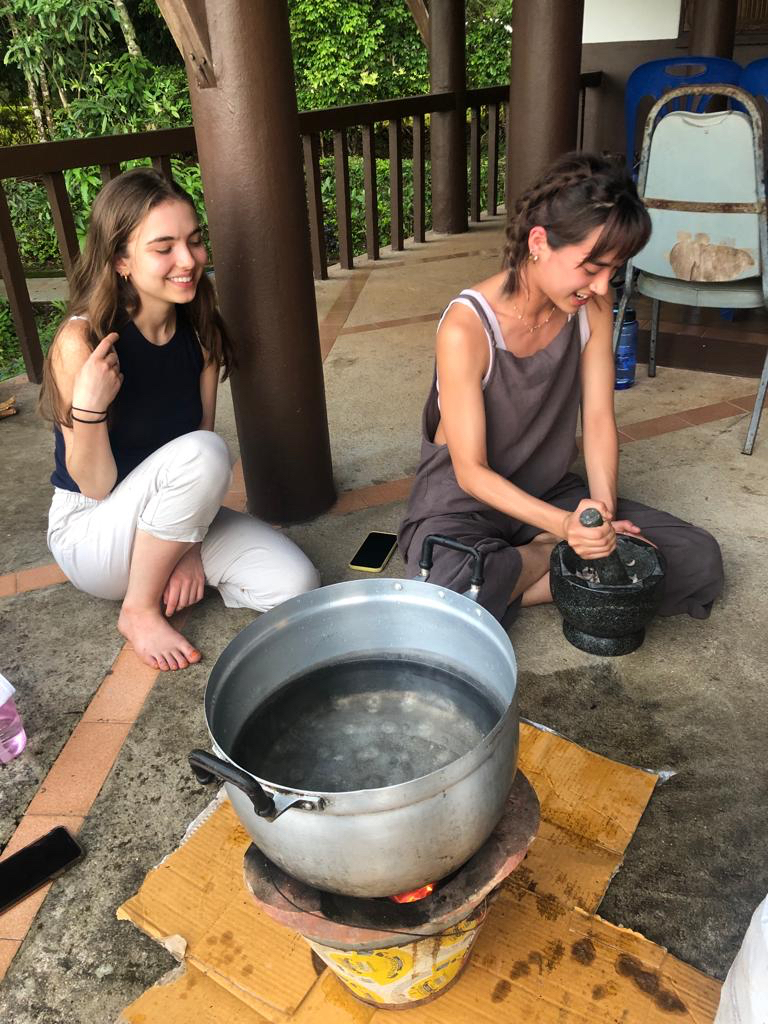
I truly loved going to the HADF retreat in the mountains. It was incredible to be so immersed in nature. The views of the surrounding mountains were absolutely breathtaking as well. Something that stuck with me from the retreat was the sense of community that was present. Everyone would band together to help make meals, set-up meals, and to clean-up after meals. Specifically, I loved when we would all work together to make our dinners over the open fires at night. It was always so relaxing to sit and continually add food to the pan. It made it extra relaxing when they would play music for us to cook to.
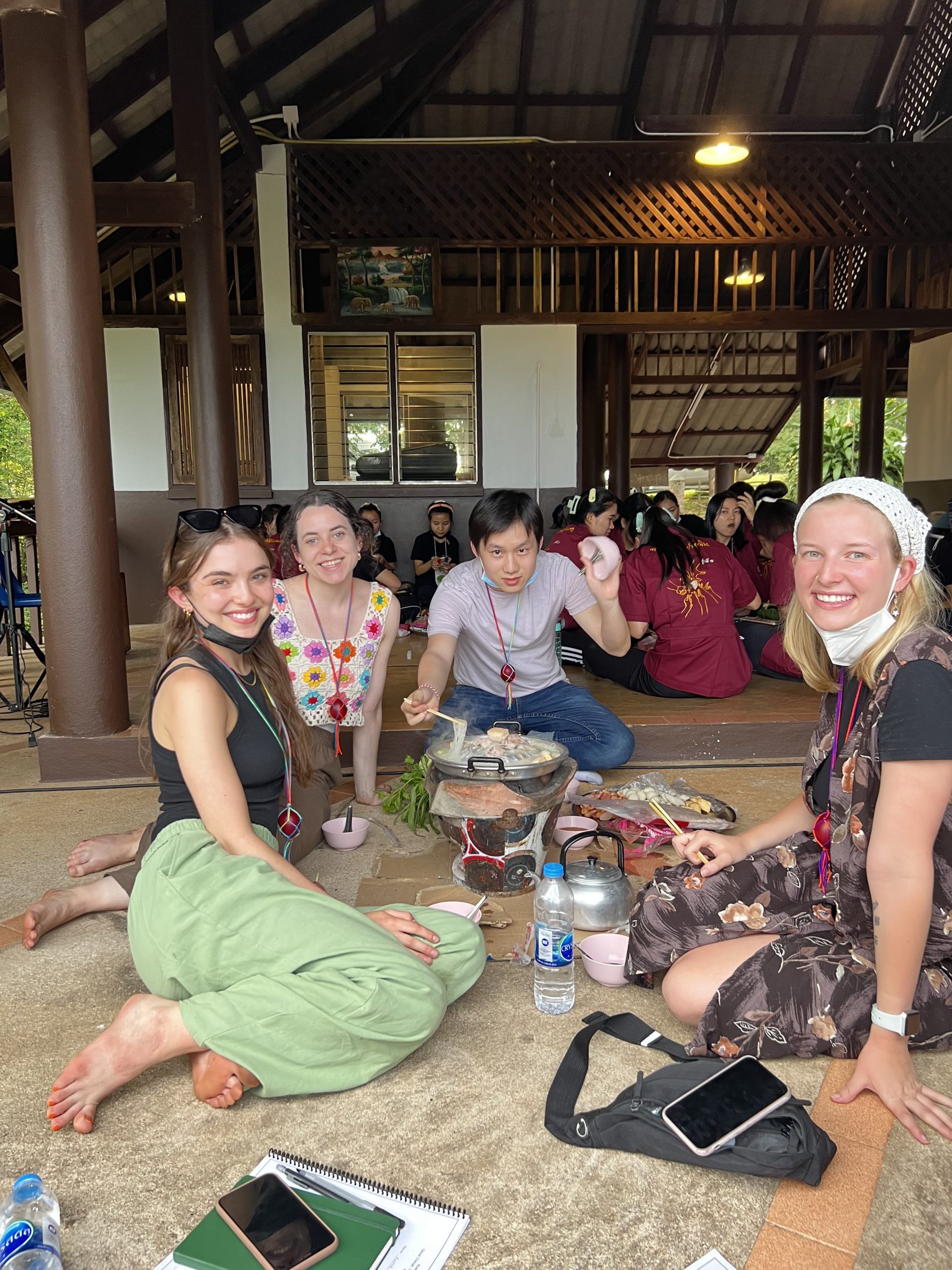
The sense of community was also added to by how we would all dance and make music together. It was so incredible when we learned new dances from Ice. I also enjoyed how he learned new dances from us. It was so fun to have this exchange of popular dances between us and Ice. It really enhanced the sense of community at the HADF retreat.
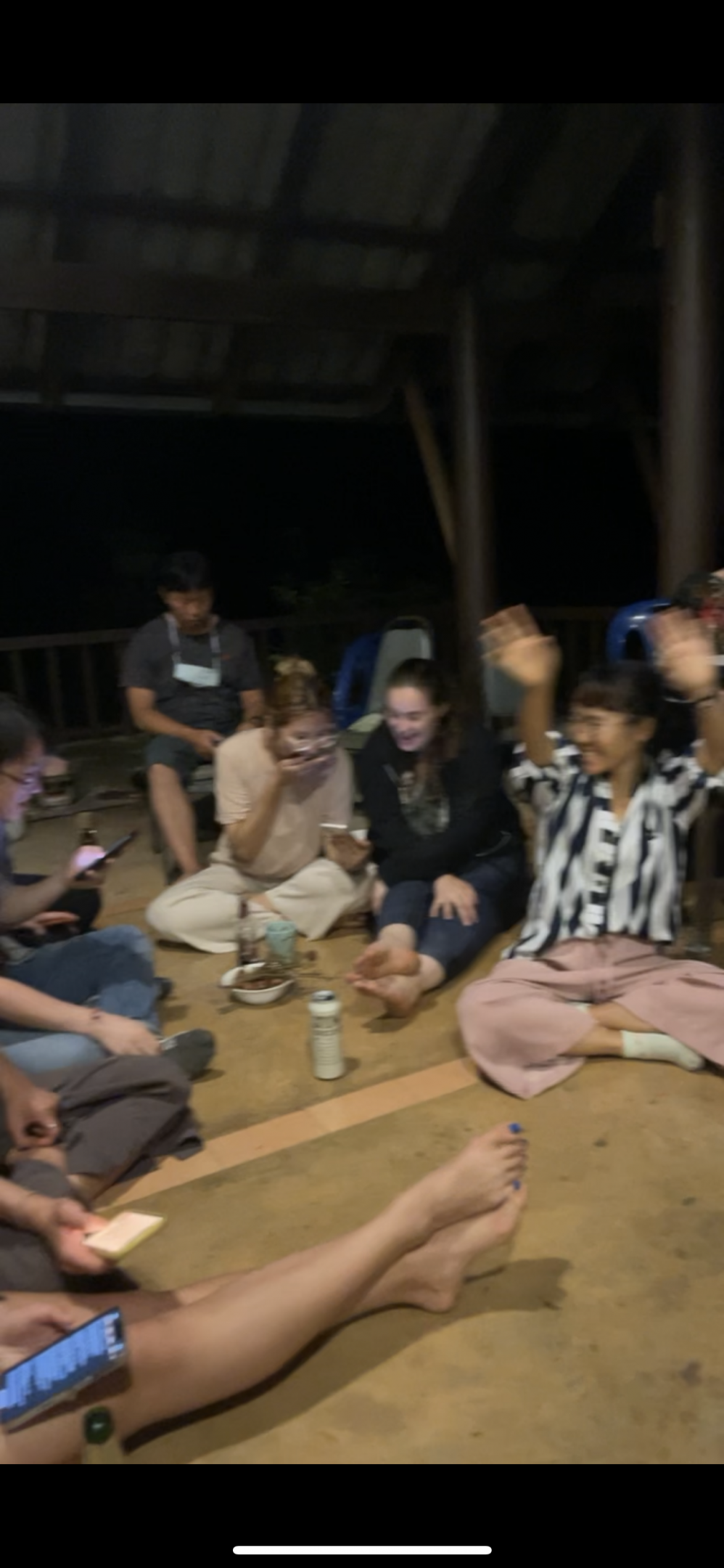
I also loved how excited everyone was to be around one another, speak to each other, and to learn from one another. I also found it incredible how excited everyone was to teach and learn new methods from one another. For example, how Anna learned a new way to cut and juice a lime while she was assisting with making dinner. Another example of this is through how I learned from Kahn that it is typical to use a spoon to eat more than a fork in Thailand. Our first night there, I originally had only picked-up a fork to eat with. Kahn looked confused and grabbed a spoon and personally handed it to me. This was a great learning moment for me about Thai culture. It also enhanced the sense of community as she went out of her way to ensure that I had all of the utensils that she believed I needed to consume dinner.
It was three years ago that I came to the Chiang Rai night market. At that time, I was a high school senior and about to graduate. I came with the Hmong class of my school and Harding High School, located in Saint Paul Minnesota. We explored parts of Bangkok, Chiang Rai, and Chiang Mai. I specifically remembered the night market in Chiang Rai. It wasn’t too big compared to the one is Chiang Mai or the stores in Bangkok, but I made many memories at this night market.
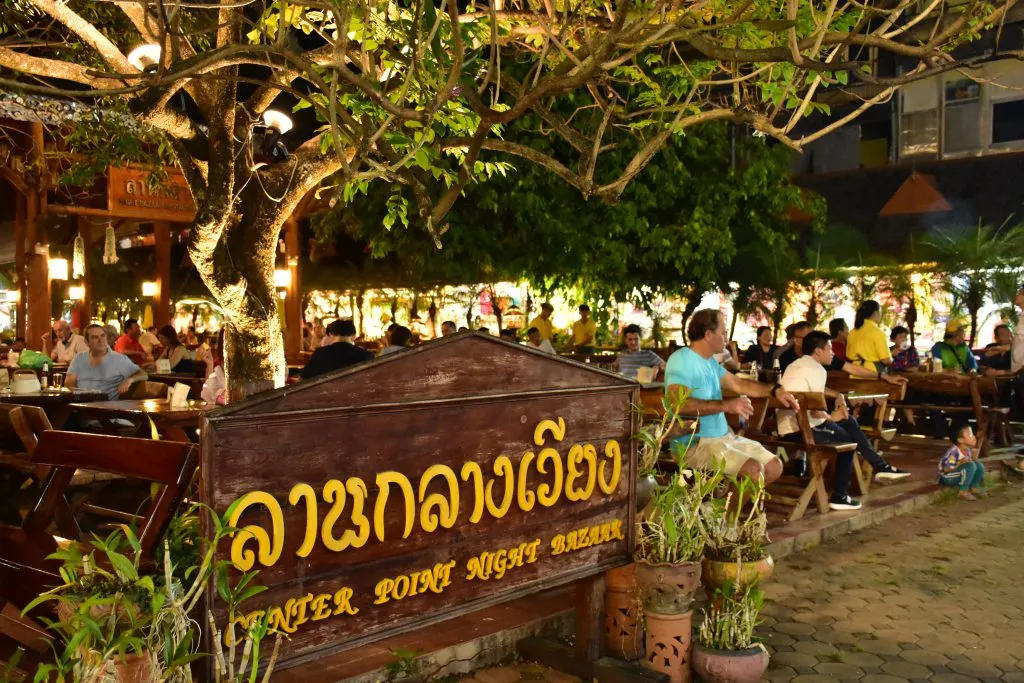
Back then, all stores and shops were opened. There was not a single closed shop that I can remember. The place was filled with tourists. The singing stage was loud and joyful with many sitting and listening to the live singing. It was simply a cheerful night. I can remember walking around and buying socks from one of the shop. Maybe not me directly, but my friend did. I bought some custom-made necklaces for my siblings.
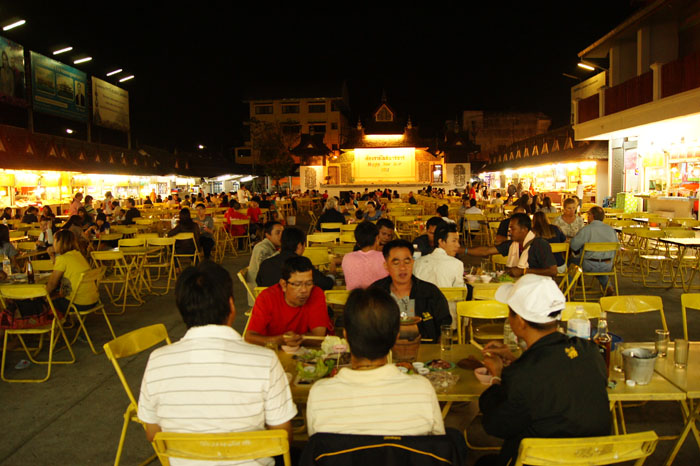
Now, fast forward three years and the year is already 2022. I have returned once again to the market. To my surprise, it is not how I remembered it anymore. Shops are closed with few remaining. There are almost no tourists in sight. The live singing is not gathering enough support. The overall situation is not as vibrant and unique like how it used to be. Why is this?
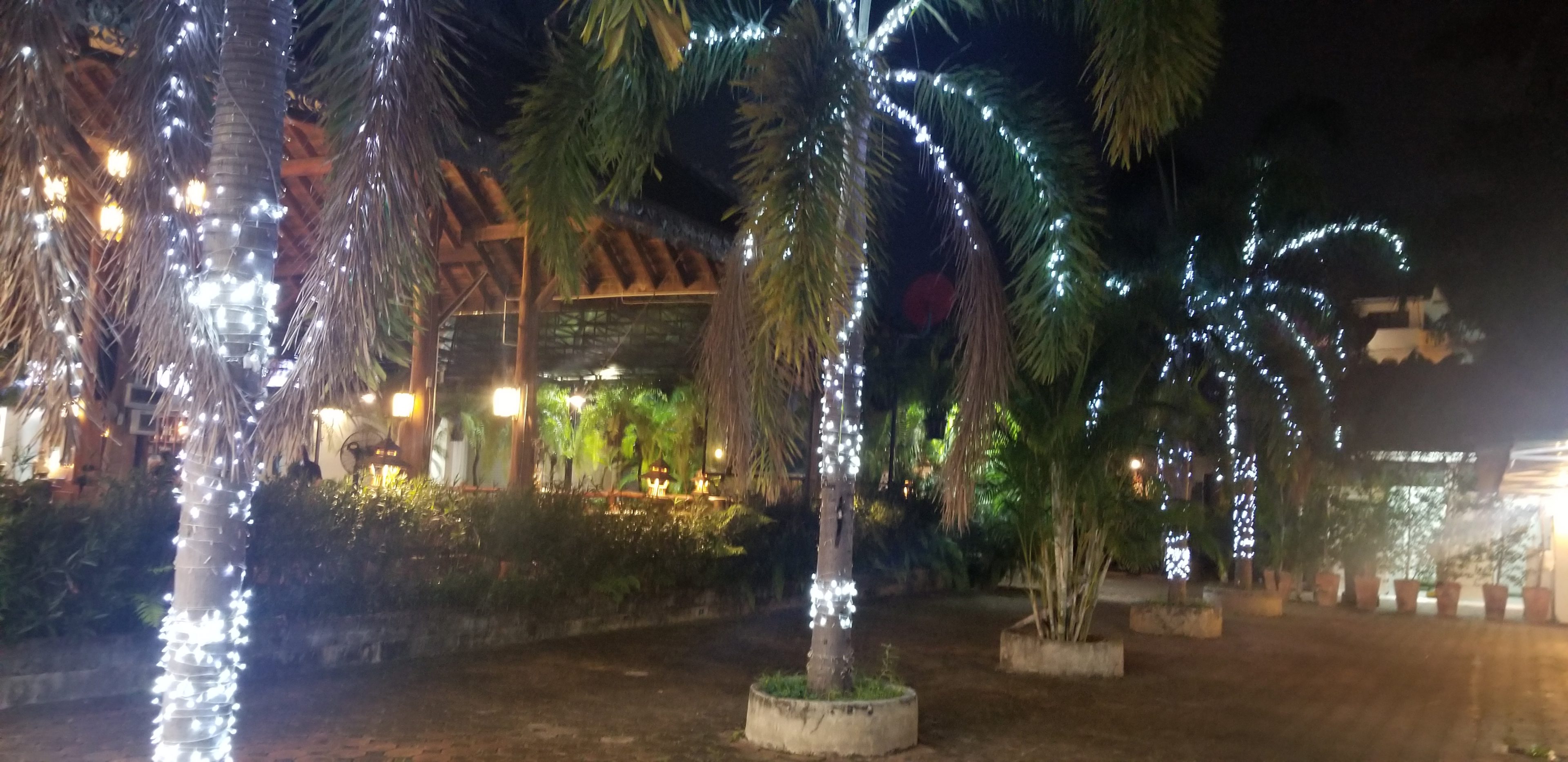

Thailand’s economy heavily rely on the tourism industry. Because of the Coronavirus pandemic in 2020, Thailand took a major hit. The pandemic made it impossible for tourists to come into Thailand. A huge percentage of their revenue drop down and many shops had to close down for alternatives. This was especially hard for night markets. Night markets rely on having numerous people exploring and shopping there. This is what makes night markets so fascinating, especially for tourists. Night market allow for a shopping experience like never before, which is through the exciting night atmosphere. It allows for interaction among the locals and learning of cultural difference, importance, and lifestyle. In addition, there are live performances that entices attraction to the market, such as singing and cultural performances. Without a constant traffic of people, all of this is just not possible and enough to continue striving.
Moving forward, I am not sure how the night markets will overcome this obstacle. There have been a major shift towards online shopping too over the past two years. It will be really difficult for night markets to go back to its peak. There is also the possibility that night markets will be change forever, or if it can even recover. At least, for now, a good step into bringing back the vibrant culture that is night markets is to reopen the shops and attractions. This may prove to be difficult given government restriction and lack of profits. But, without a first step, there is no destination.
My first impressions of Thailand are that it is extremely gorgeous and lush with plants. As someone who loves plants and works at a plant shop, I have a strong appreciation for the wide variety of plants that live and thrive in Thailand. The hot, humid, rainy weather allows many varieties of plants to thrive all year. The plants here grow wildly and reach lushness and sizes I have not seen in Minnesota. I really appreciate how most shops and households have plants outside. Whether it be a decorative plant, or herbs, veggies, or fruit trees. The cultivation, use and distribution of plants or crops are often a way of life and the source of income for many people living here in Thailand.
I noticed many plants that I recognize that we sell at the Highland Nursery as house plants. Unfortunately due to the cold climate, the plants that live year-round in Thailand can only be kept as houseplants, or used as annuals (plants that do not survive the winter). In my opinion, annuals can be expensive and somewhat wasteful as people buy them knowing they will not survive the winter. Whereas in Thailand, these houseplants and what we know in Minnesota as annuals can live for many many years and be propagated to create new plants as well.
I have also been so impressed and astonished by the sheer number of fruit trees along the streets and also on residential properties. So far, I have seen mango trees, jackfruit trees, lychee tress, tamarind trees, pomegranate trees, banana plants. Many families can use the fruit they grow to eat and to sell. Again, in Minnesota, none of these trees would be able to survive the winter climate. Unfortunately one of the only fruit trees that can thrive throughout the winter is the apple tree. One day, I hope to live in a climate where I can grow many fruit trees and houseplants as outdoor plants, all year long.



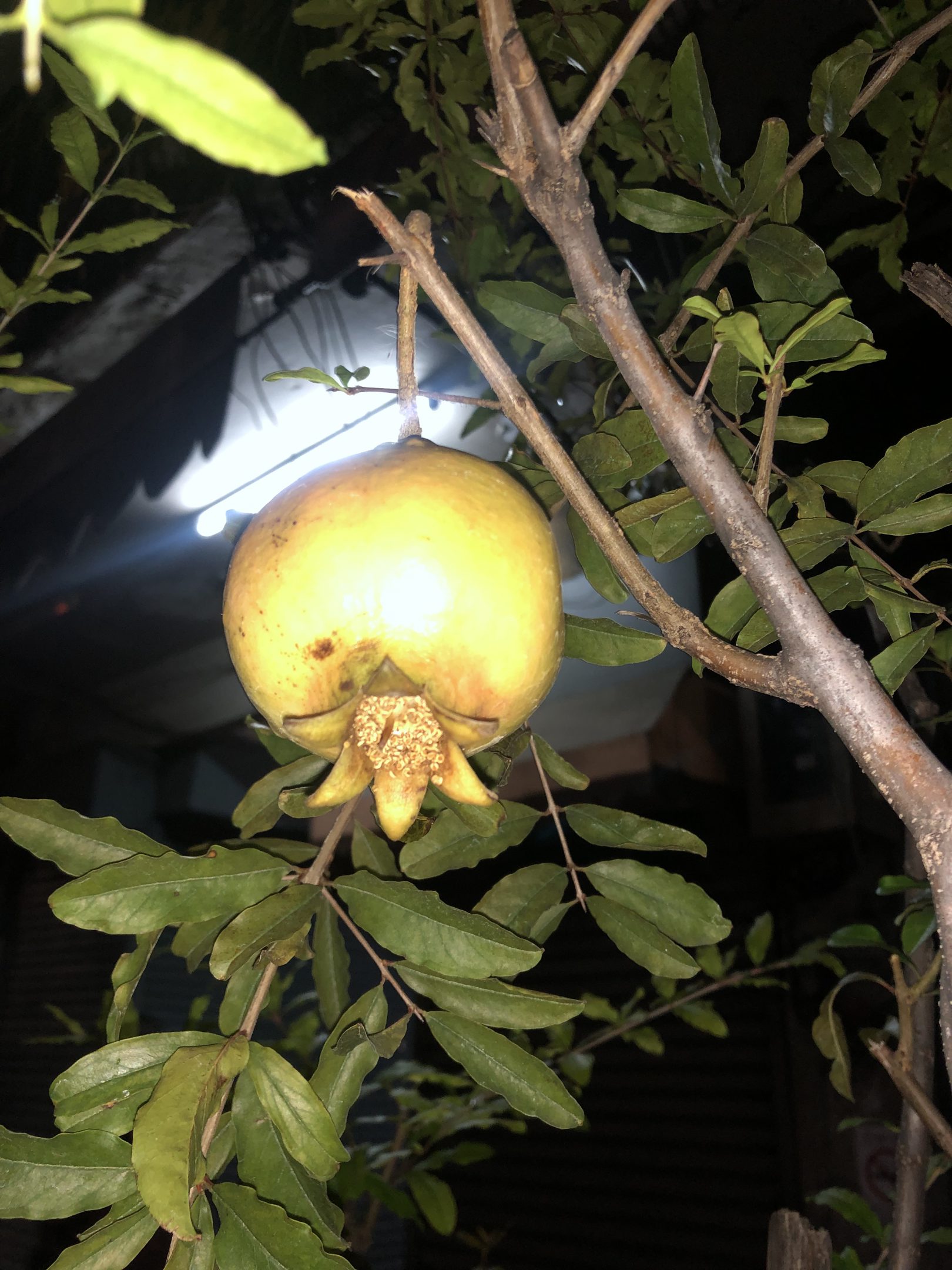
I had a lot of first impressions throughout the experiences of our first couple of days in Thailand. I think although there is much to choose from, I really was choked by my sense of connection to a part of my identity, family, and culture that I feel very detached from the majority of time. I’ve noticed many minuscule details that remind me completely of my dad, a lot of spaces where I see similarities or cultural influence on my family that I’ve often felt alone in my experience at home.
On the first day in Chiang Rai we were brought to a khao soi restaurant where the owner had a radiant smile while preparing and serving our dish. As our group ate, we listened to the owner have a conversation with Archan Cathy, eagerly speaking about the dish, its ingredients and preparation. Hopping between language use, speaking in both Thai and English, I sat in awe of his passion for food. I saw something in him that I see so clearly in my dad.
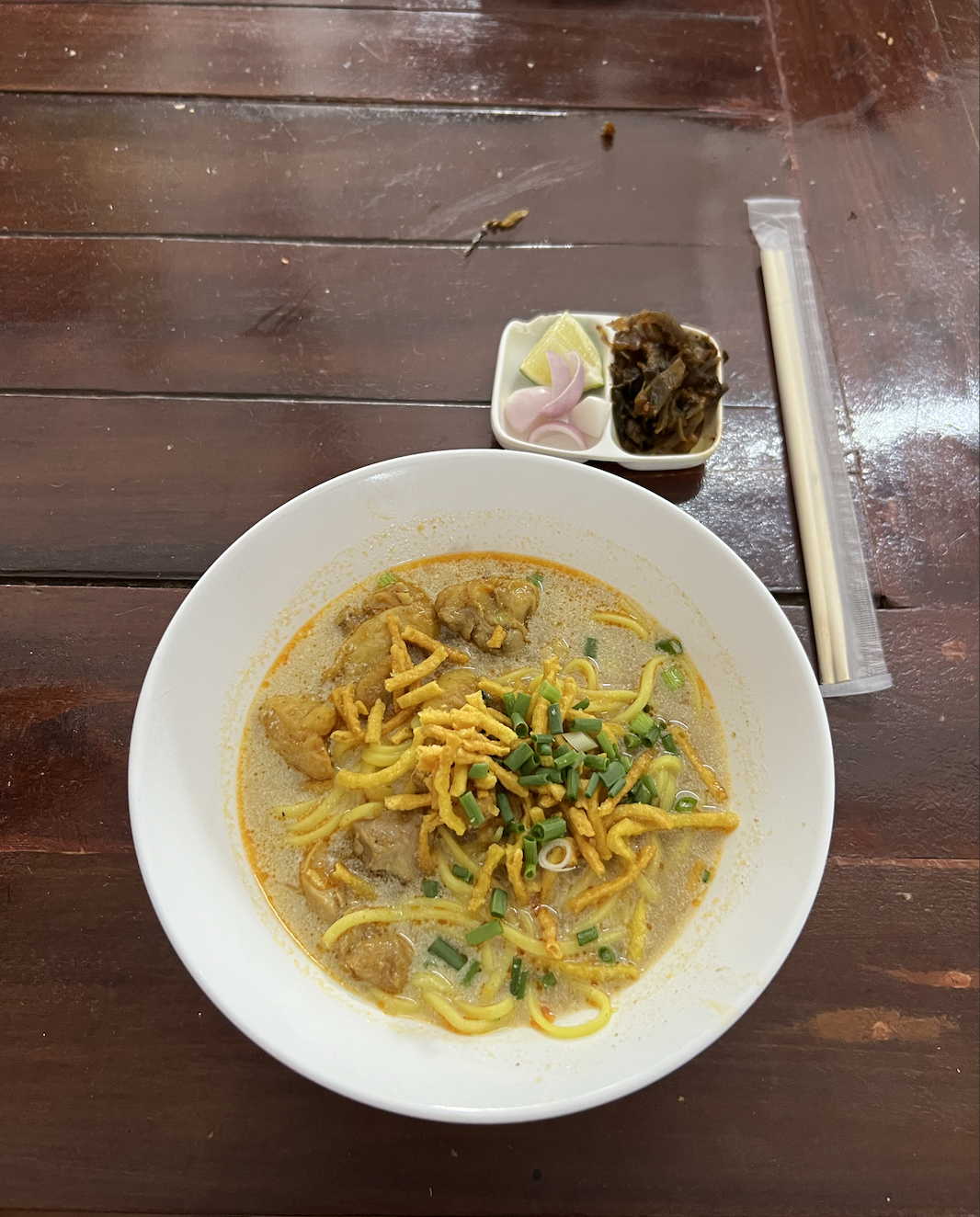

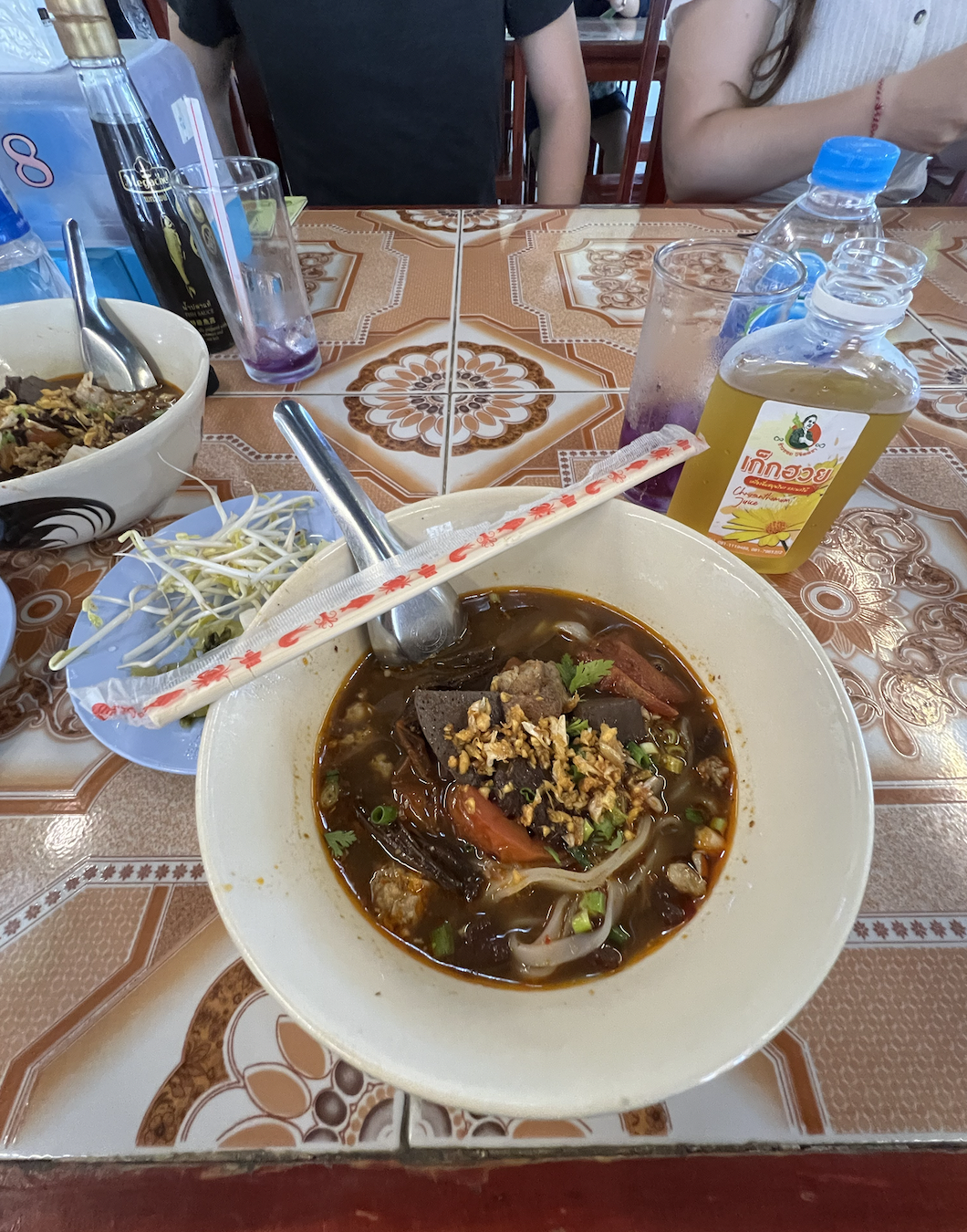
I always joke that my dads love language is food and although I am over 8,000 miles away from him, I feel more connected to him than ever. With every meal or Thai beer I have, I think of him. The journey of pain and sacrifice he endured to immigrate to the United States may never bring him back here to Asia, but I feel honored to have the opportunity to be here, for both me, and my family.
